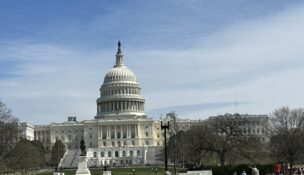EEOC publishes guidance on religious garb, grooming
By: Correy Stephenson, BridgeTower Media Newswires//May 14, 2014//
EEOC publishes guidance on religious garb, grooming
By: Correy Stephenson, BridgeTower Media Newswires//May 14, 2014//
As the expression goes, “the clothes make the man.”
Apparently, the Equal Employment Opportunity Commission agrees, recently issuing new guidance on employee rights with regard to religious garb and grooming.
Claims of religious discrimination in violation of Title VII have more than doubled in the last 15 years, the agency said, from 1,709 charges received in fiscal year 1997 to 3,721 charges filed in fiscal year 2013.
The claims can be expensive for employers, a lesson learned by Washtenaw County, Mich., earlier this year when a federal jury ordered the government to pay a record $1.1 million to Ali Aboubaker, a maintenance worker who charged the county with religious discrimination, among other claims.
Shereef Akeel, who represented the plaintiff, said the guidance will provide some much-needed education for employers who may not understand their obligations.
“Especially since 9/11,” he said, “there is a real need to educate the public as a whole concerning the religion of Islam.”
But Akeel, of Akeel & Valentine in Troy, Mich., noted he also has represented a Christian employee who was discriminated against by an employer because of his beard.
The new guidance offers some valuable examples of real-life situations requiring religious accommodations but also poses some serious challenges for employers, attorneys said.
 The EEOC emphasized that religious accommodations are an individualized inquiry with “no one-size-fits-all answer,” said Kurt Graham of the Grand Rapids office of Clark Hill PLC. Conducting an evaluation on a case-by-case basis “is extremely hard for employers,” Graham said, and they often get tripped up because different answers are required for different employees.
The EEOC emphasized that religious accommodations are an individualized inquiry with “no one-size-fits-all answer,” said Kurt Graham of the Grand Rapids office of Clark Hill PLC. Conducting an evaluation on a case-by-case basis “is extremely hard for employers,” Graham said, and they often get tripped up because different answers are required for different employees.
Further complicating the picture for employers: limited defenses. The guidance implies that the issue of whether an employee’s beliefs are sincere should not distract employers from providing accommodations. Only if meeting the employee’s request would create an undue hardship can employers avoid the necessary change.
“Employers are typically looking to put policies in place that will cover most, if not all, of their workforce and that are easy to administer and monitor,” said Jackson Lewis partner Matthew Disbrow. But the guidance “has very few bright lines and a lot of shades of gray, placing significant additional burdens on employers to look more carefully at these issues.”
Beards, dreadlocks and hijabs
The EEOC released two new documents: a fact sheet and a question-and-answer guide that offers 21 examples based on real cases across the country.
The “Religious Garb and Grooming in the Workplace: Rights and Responsibilities” guidance covers grooming topics such as beards and dreadlocks, head coverings – including hijabs and yarmulkes – and clothing, such as a request to wear more modest dress then a uniform provides. The guidance also addresses accessories including tattoos and piercings, as well as a kirpan, a four-inch symbolic miniature sword carried by some Sikh believers.
Potential issues include an employee’s new observance (respect it, the EEOC says); customer preference (irrelevant); and dress codes predicated on an employer’s image (insufficient to demonstrate that a deviation would cause an undue hardship).
While the documents cover a lot of ground, attorneys identified three key takeaways for employers:
• Use care when questioning sincerity. What if an employer doesn’t believe the request is really based on religious beliefs — for example, where a worker suddenly claims he cannot work on a specific weekend day because of the Sabbath? Be careful when questioning the sincerity of a worker’s religious beliefs, attorneys cautioned.
“This is really a subjective standard,” noted Cummings, McClorey, Davis & Acho attorney Jim Acho. “An employer has to take the employee at his or her word that they are adhering to a religious practice.”
As attorney Rhonda Armstrong of Pilchak & Cohen noted, if the EEOC suggested an accommodation be made for a kirpan, employment attorneys should err on the side of assuming a belief is sincere. Graham said circumstances do exist where an employer can at least ask an employee some additional questions. “If the timing is suspicious,” he said, “or you have another reason to question the request, employers have every right to ask for more information.”
• Undue hardship is a high standard. Undue hardship, as explained by the EEOC in the guidance, requires more than unhappy employees or employer inconvenience.
“You need to show some type of material disruption to the workplace that really affects your ability to have your business function,” Graham said. “It’s a high showing.”
Disbrow agreed.
“Employers can’t just say that customers don’t like it,” he said, “or that they will lose money or that the accommodation doesn’t fit the particular image that they are trying to convey.”
According to the EEOC, health, safety, or security concerns may serve as the basis for an undue hardship argument, but “it can’t just be hypothetical,” Disbrow said.
• Conduct an individualized review. “Employers can’t have a zero tolerance policy with respect to dress and grooming,” Armstrong said.
The inquiry into a religious accommodation is not just individually specific, but fact- and job-specific as well, Disbrow noted, with the possibility that one employee will receive an accommodation where another does not. A hospital may be faced with requests from an ER nurse and a janitor for an accommodation relating to clothing that could be granted for the janitor and denied for the nurse because of safety considerations, for example.
Employers also face the potential for employee friction when one person is granted an accommodation and another is denied, or co-workers don’t understand why someone else is allowed to deviate from the official policy.
“Employers don’t want to get in the middle of it and the path of least resistance is to say ‘no’ to everyone,” Graham said, but such a stance could leave an employer liable for religious discrimination.
Advice for employers
Despite the possibility of multiple exceptions, attorneys said the need for a dress code outweighs the potential for deviations.
“Employers are still well-advised to have an appropriate dress code for their particular business to make clear what is acceptable and not acceptable generally,” Disbrow said, and the absence of a policy could create even more problems. However, he said, “employers need to understand that [the policy] is not going to be enforced every time.”
Employers should also update their policy to establish a process to request a religious accommodation, he added, and consider adding examples of requests with explanations of what might constitute a reasonable accommodation. Details like this “are not only good for employee understanding but for managers as well,” Disbrow said. And put employees on notice of the policy as early as possible to put the employer in a better position by communicating the dress code up front in the interview or application stage of the process, he added.
Graham said he encourages employers to document their decision-making thoroughly.
“Keep track of what the employee is requesting and why, document whether the request is granted and why, and if the request is denied, document the analysis that was conducted and why that decision was reached,” he suggested. Such documentation can help employers when faced with a claim of religious discrimination down the line or provide a defense in a separate discrimination case.
For example, if an accommodation was granted for a male employee deviating from the company’s dress policy for religious reasons, an employer could point to that explanation when a female employee is later denied an accommodation for nonreligious reasons but claims the refusal constituted gender discrimination.
Armstrong emphasized the need for training.
“Front line supervisors make the biggest mistakes for the employer,” she said.
Remind managers and HR employees that similar to the Family and Medical Leave Act, there are no magic words for an employee to trigger protections under Title VII for religious discrimination.
“Just because an employee does not specifically ask for an accommodation doesn’t mean the obligation hasn’t been invoked,” she warned.
And remember, the guidance represents the EEOC’s viewpoint — not necessarily how a judge would rule in a religious discrimination lawsuit, Disbrow said.
“The question becomes,” he said, “how much of this will be enforced exactly as interpreted by the EEOC?”
A licensed attorney, Correy Stephenson is a New York-based writer and editor who focuses on the legal industry.
Legal News
- Wisconsin Attorney General asks Congress to expand reproductive health services
- Attorney General Kaul releases update at three-year anniversary of clergy and faith leader abuse initiative
- State Bar leaders remain deeply divided over special purpose trust
- Former Wisconsin college chancellor fired over porn career is fighting to keep his faculty post
- Pecker says he pledged to be Trump campaign’s ‘eyes and ears’ during 2016 race
- A conservative quest to limit diversity programs gains momentum in states
- Wisconsin prison inmate pleads not guilty to killing cellmate
- Waukesha man sentenced to 30 years for Sex Trafficking
- 12-year-old shot in Milwaukee Wednesday with ‘serious injuries’
- Milwaukee man convicted of laundering proceeds of business email compromise fraud schemes
- Giuliani, Meadows among 18 indicted in Arizona fake electors case
- Some State Bar diversity participants walk away from program
WLJ People
- Power 30 Personal Injury Attorneys – Russell Nicolet
- Power 30 Personal Injury Attorneys – Benjamin Nicolet
- Power 30 Personal Injury Attorneys – Dustin T. Woehl
- Power 30 Personal Injury Attorneys – Katherine Metzger
- Power 30 Personal Injury Attorneys – Joseph Ryan
- Power 30 Personal Injury Attorneys – James M. Ryan
- Power 30 Personal Injury Attorneys – Dana Wachs
- Power 30 Personal Injury Attorneys – Mark L. Thomsen
- Power 30 Personal Injury Attorneys – Matthew Lein
- Power 30 Personal Injury Attorneys – Jeffrey A. Pitman
- Power 30 Personal Injury Attorneys – William Pemberton
- Power 30 Personal Injury Attorneys – Howard S. Sicula











